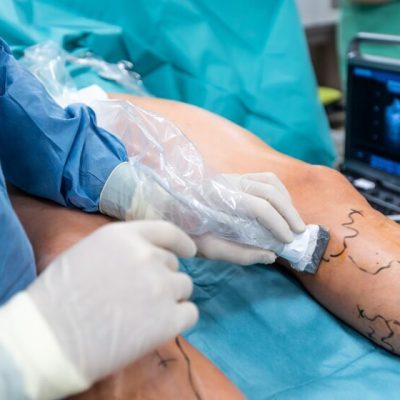Varicose Veins Treatment - Laser, Glue, Foam


Varicose Veins Treatment - Laser, Glue, Foam
Varicose veins are twisted, enlarged veins. Any vein that is close to the skin’s surface (superficial) can become varicosed. Varicose veins most commonly affect the veins in the legs. That’s because standing and walking increase the pressure in the veins of the lower body.
Laser treatment.
Laser energy is used to scar and destroy varicose veins. This is called ablation.
Simple laser therapy is done on small veins close to the skin, such as spider veins. The laser is used outside of your skin.
Endovenous laser therapy uses a laser fiber inserted into the vein. Laser ablation inside the vein makes the vein close up.
Glue Treatment
Unlike endovenous ablation treatment procedures (laser, radiofrequency), this procedure does not involve multiple injections of anesthetic fluid.
Glue treatment avoids any discomfort or bruising that is common after endothermal ablation or surgical stripping procedure.
While other kinds of treatment require usage of compression bandaging or stockings over veins that have been glued for several days, glue treatment normally does not require bandages or compression stockings. During treatment when veins are removed through small incisions, slight bruising is possible which can be minimized with just 24 hours of compression usage.
Immediate return to normal activities is possible, though avoiding any strenuous work is generally recommended for few days.
No general anesthesia is needed and this is done as a single day procedure.
The entire procedure is completed in an hour and the patients have quicker recovery.
Foam Treatment
Foam sclerotherapy is a minimally invasive technique for men and women to eliminate unsightly varicose veins and spider veins. The procedure involves injecting a foam sclerosant in a blood vessel to close it. The blood reroutes itself through healthy veins, restoring more normal blood flow.
